Earth has seen at least five major mass extinctions. Now, Natural Resources Canada science is bringing the world closer to understanding these catastrophic events.
February 2020
By Jennifer Kamau with Steve Grasby
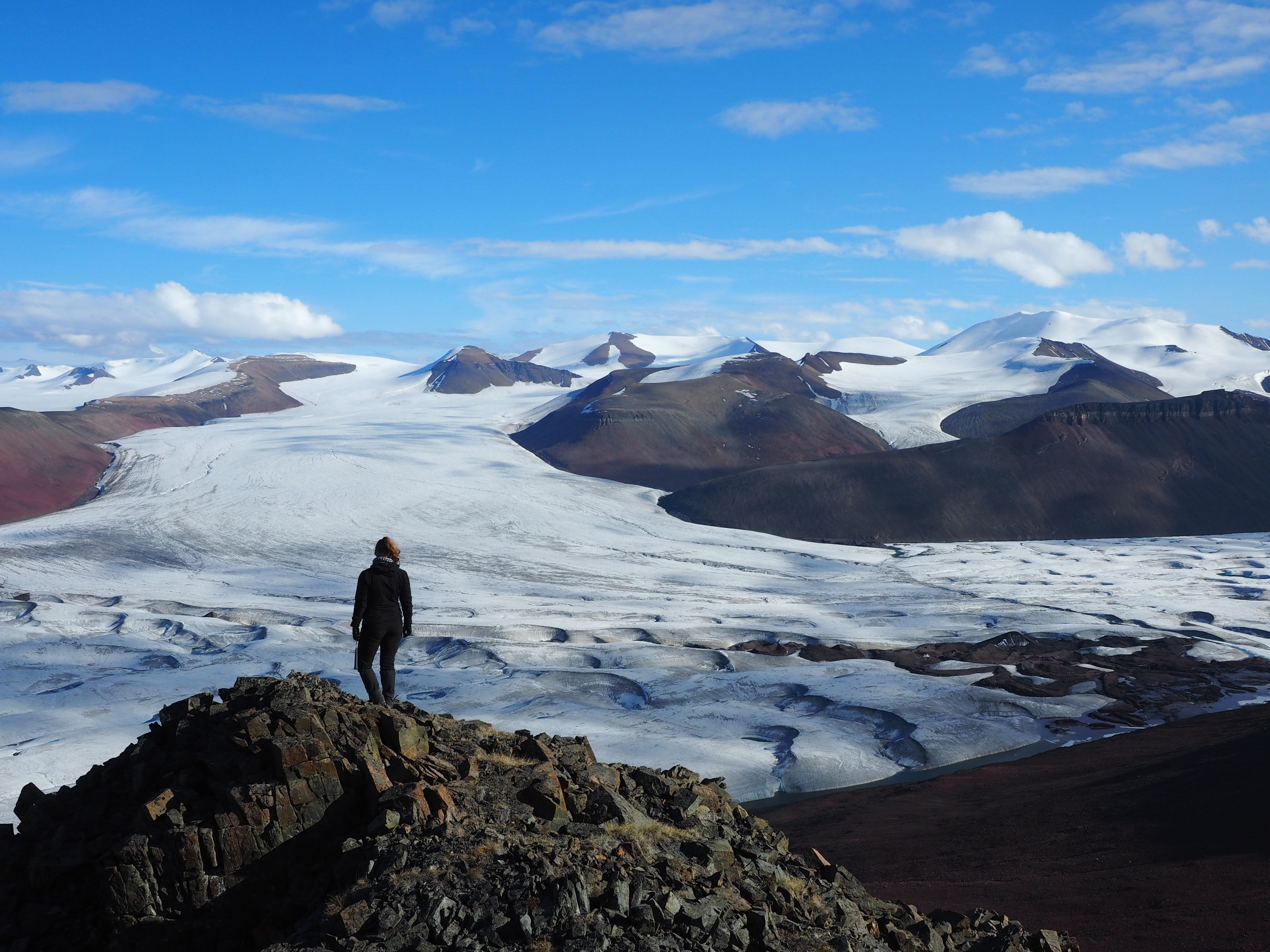
The team travelled as far as the north coast of Ellesmere Island to collect rock samples.
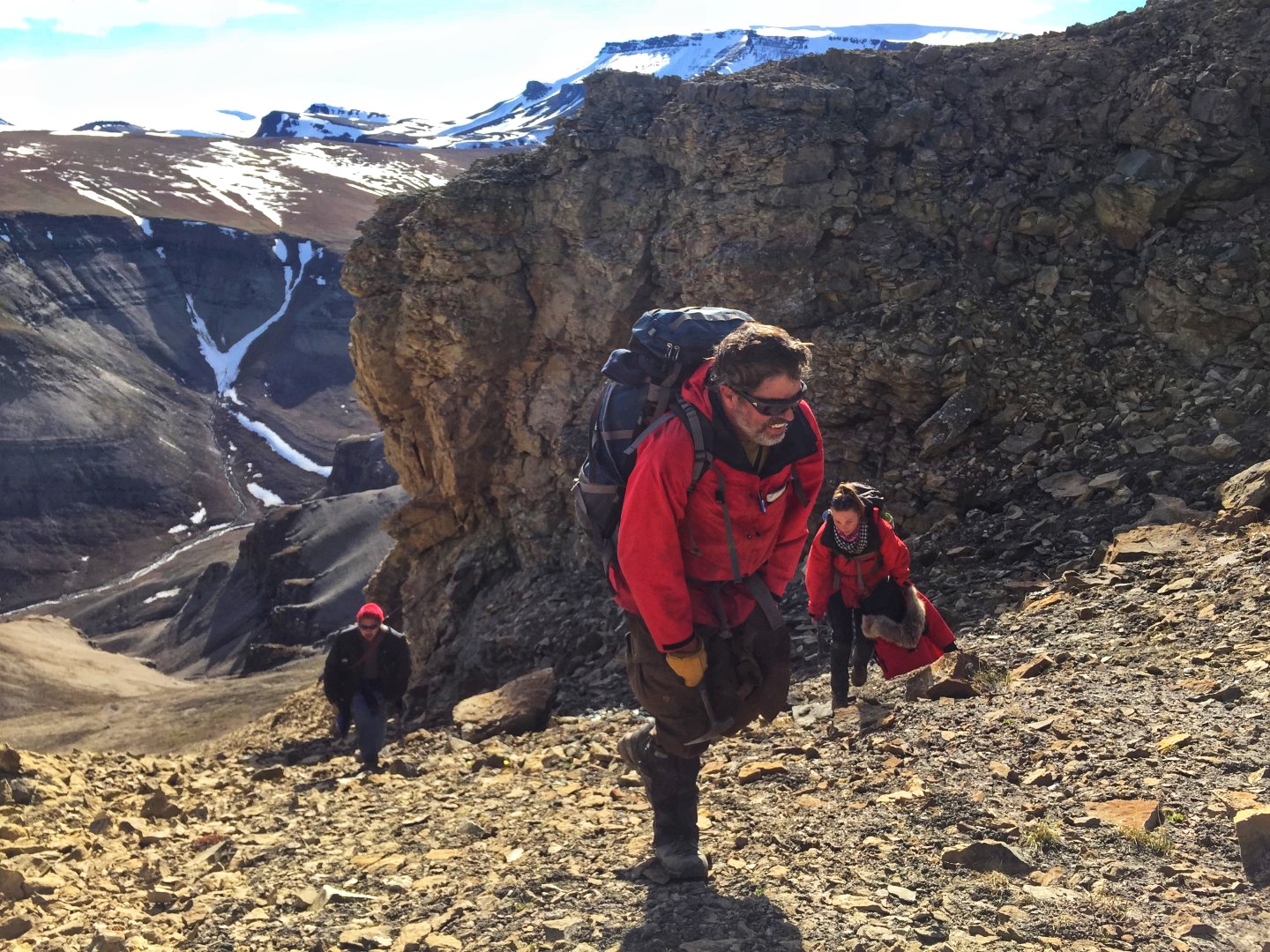
Steve Grasby and team carrying heavy bags of rocks collected from outcrops on northern Ellesmere Island.
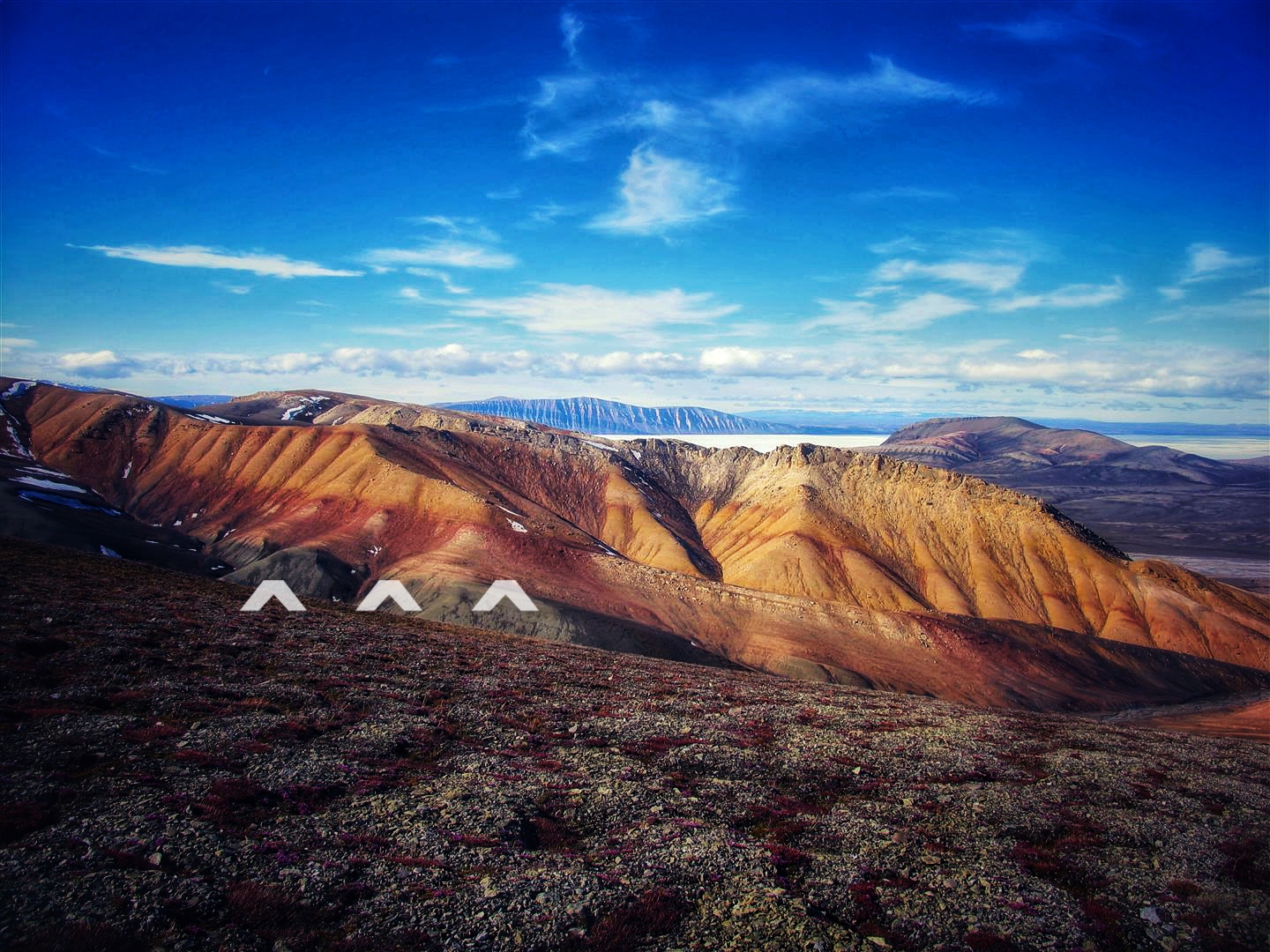
The change from green to red rock on northern Ellesmere Island marks the time when 90 percent of life was lost during the Permian Extinction. A large spike in mercury content was found here.
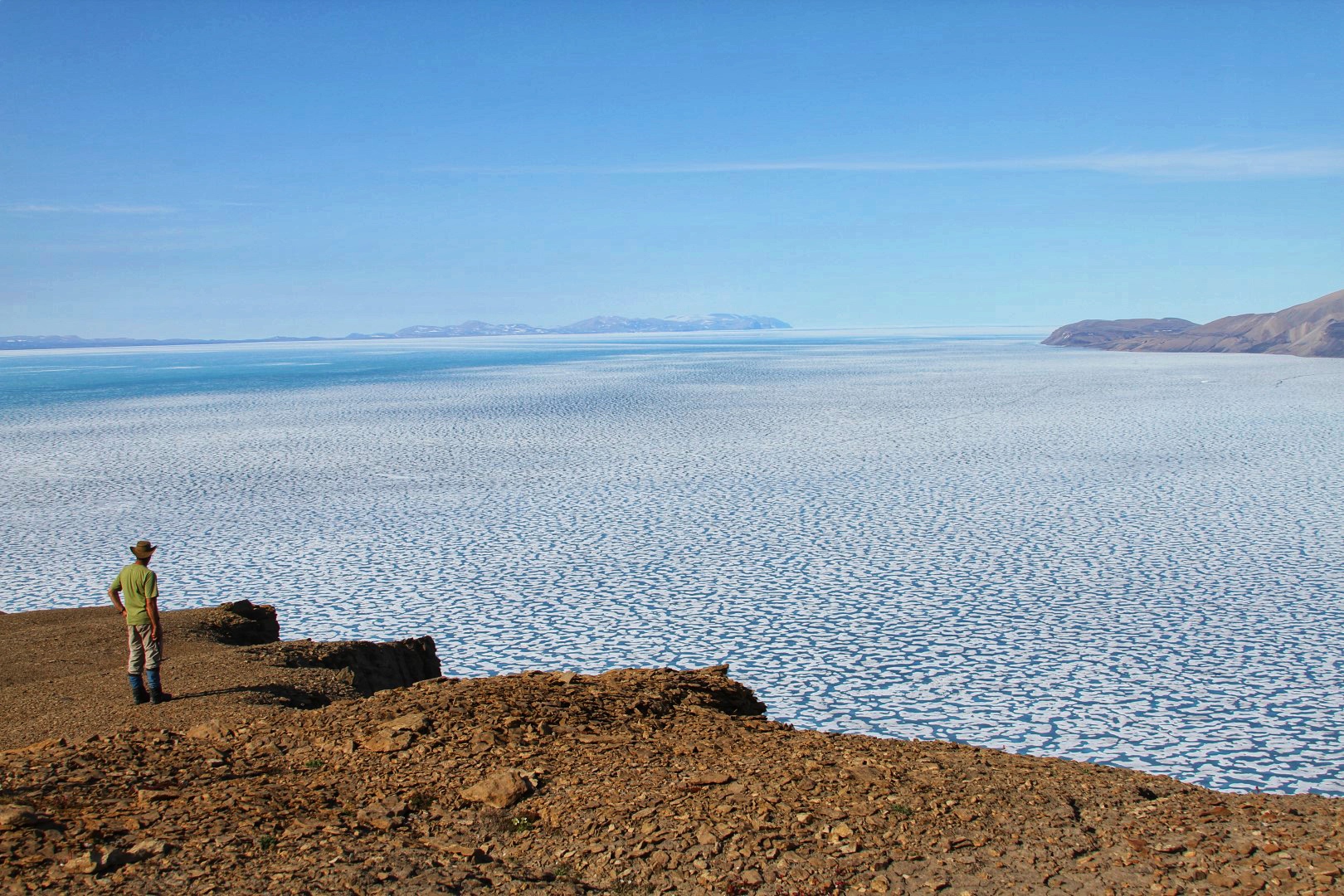
Steve Grasby standing on outcrop of shales on cliffs on the Otto Fiord (Nunavut).
On a typical day at the lab, research scientist Steve Grasby focuses on geochemistry at the Geological Survey of Canada – Calgary (GSC – Calgary). But recently he’s been exploring a different subject: assessing the deadly impacts of prehistoric volcanos. He uses novel techniques developed by Natural Resources Canada (NRCan) to investigate the link between special rock formations produced by massive volcanic eruptions — called large igneous provinces (LIPs) — and the most severe mass extinctions over the past 540 million years.
Eruptions, Ecosystems and Extinctions
His research is demonstrating a clear connection between the timing of these eruptions and global-scale climate impacts — such as climate warming, the depletion of the ozone layer and the heating and acidification of the world’s oceans — that have affected life through Earth’s history and have even led to several major mass extinctions.
Not all LIP events are deadly, as Steve is quick to emphasize. “There’s still much research required to understand how they affect global ecosystems and the nature of extinction processes,” he says. “But they can provide critical insight into how Earth systems respond to significant changes to climate systems.”
Hot Rocks
It’s only natural that these rock formations should be connected with catastrophic events. LIPs are extremely large accumulations of solidified molten rock that’s stored underground as magma or released through volcanos as lava. They can measure over seven million square kilometres in size — almost the size of Canada. They form after a series of super volcanic eruptions — 10,000 times larger than any known in human history — that take place not over weeks or months but hundreds of thousands of years.
Since these eruptions produce massive quantities of carbon dioxide and methane emissions that drive climate warming and produce hothouse conditions on Earth, they’re increasingly believed to be at least partly responsible for major mass extinctions.
The connection seems obvious and inviting. But in trying to establish a direct causal link between these two pieces of the puzzle — the eruptions and the extinctions — scientists have long faced a roadblock: proving they happened at the same time. Until now.
The Answer, Written in Stone
While conducting research for NRCan’s Geo-mapping for Energy and Minerals (GEM) Program, Steve and his colleagues used a specialized lab technique to uncover a chemical fingerprint in the volcanic rock — levels of mercury — that can accurately date periods of major eruptions in the geological record.
The theory behind the science is straightforward: since volcanoes are the largest natural source of mercury, high concentrations of the element in rock from extinction events are almost certainly the result of large volcanic eruptions that took place at the same time. From this probable connection, it follows that the climate change effects of the eruptions may be directly linked to the mass extinctions that swept prehistoric Earth and shaped the evolution of life.
The History of the Past, A Lesson for the Future?
These findings can help scientists understand climate change events of the distant past. Yet we must be cautious in drawing any conclusions in connection with modern changes in the environment. As Steve points out, conditions then are so much different from those of today. “The LIP events we have studied are far worse scenarios than modern climate warming,” he says.
Yet the main point stands: “They do demonstrate the impact that deleterious gases and other substances can have on Earth systems, as well as the resilience of life that has made it through extinction events.”
From an NRCan Lab to the World
This approach to the question of an eruption–extinction link is attracting widespread interest. Steve is in demand to lecture on the subject internationally, and research groups around the world are now applying the technique to help demonstrate that every major extinction event in the rock record is associated with a large increase in mercury, and thus connected with major volcanic eruptions.
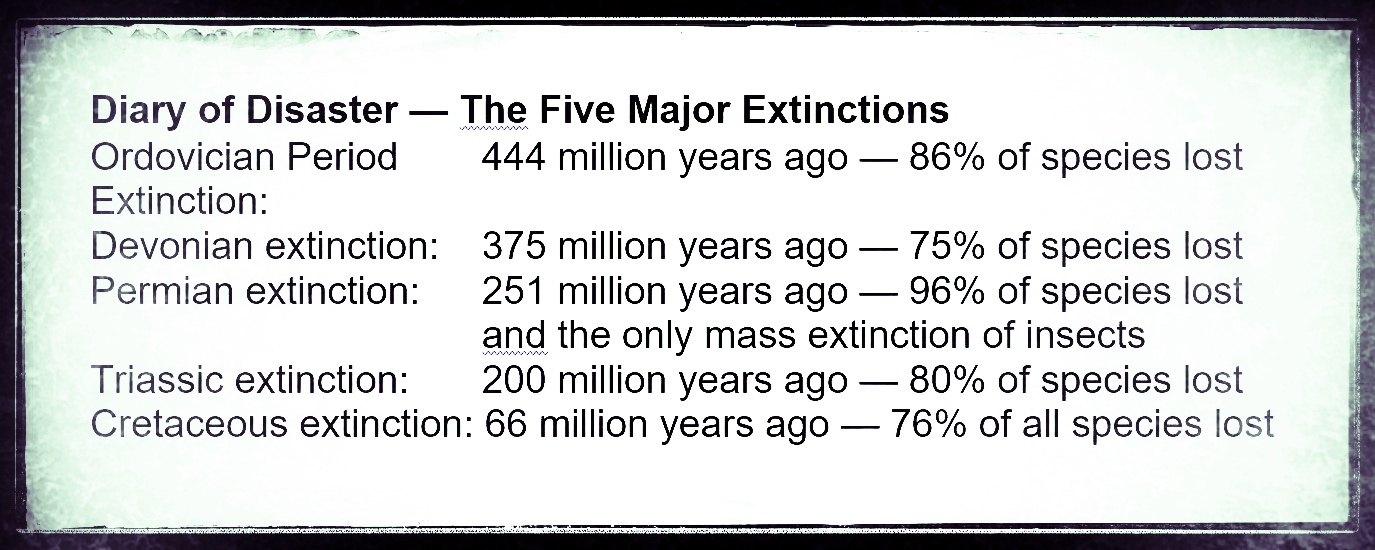
- The study in full: Mercury as a proxy for volcanic emissions in the geological record
- Volcanoes Canada
- Are we living in a sixth mass extinction event, the Holocene extinction?